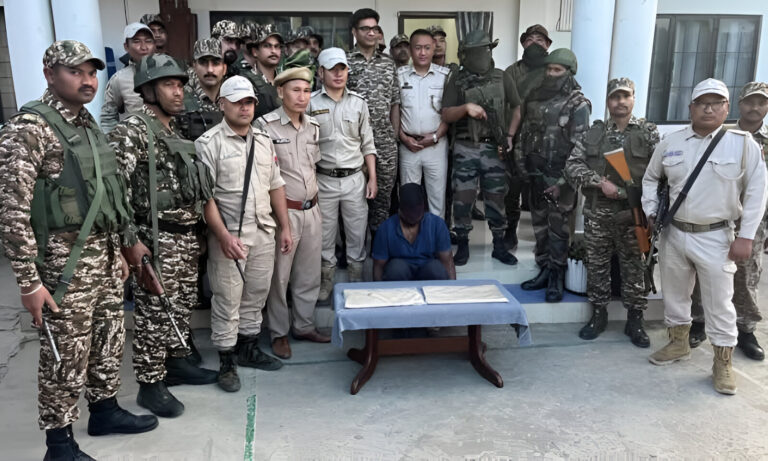Bomb Threats Target Over 10 Indian Flights in 24 Hours: Panic Ensues and Routes Diverted
Summary
In a shocking turn of events, over 10 Indian carrier flights were hit with bomb threats within a span of 24 hours. Flights from IndiGo, Akasa, Vistara, and Air India Express faced serious security alerts, leading to diversions and emergency landings. After thorough checks, all threats were deemed hoaxes, but the chaos left passengers shaken and authorities on high alert. This incident comes on the heels of similar bomb threats earlier in the week, raising questions about the ongoing security protocols in India.
Long Article
Introduction: A Surge in Bomb Threats Shakes Indian Aviation
Imagine boarding your flight for what should be a routine journey, only to be told mid-air that there’s a bomb threat. That’s the scenario more than 10 Indian carrier flights faced recently. Over the course of 24 hours, flights from airlines like IndiGo, Akasa, Vistara, and Air India Express were targeted with bomb threats, leaving passengers and authorities scrambling. With so many threats in such a short time, it’s no wonder that Indian aviation was thrown into a state of emergency.
But what exactly happened? Were these threats real, and how did authorities respond? Let’s dive into the details to understand this unsettling incident and its broader implications.
The Series of Bomb Threats: What Went Down?
In the early hours of October 19, 2024, a wave of bomb threats hit various Indian airlines. At least five IndiGo flights, five Akasa Air flights, three Vistara flights, and one Air India Express flight were targeted. These threats came in through various means, including emails, causing panic amongst passengers and prompting immediate action from the airlines and authorities.
In the midst of this chaos, some flights were forced to divert, others returned to their departure points, and all underwent thorough security checks. Thankfully, all of these threats turned out to be hoaxes. But the disruptions caused were significant, with passengers reporting delays, anxiety, and an overwhelming sense of uncertainty.
Notable Incidents: Key Flights Affected
Among the affected flights, a few stand out due to the scale of the disruptions they faced:
- Vistara’s Delhi to London Flight: Perhaps the most high-profile incident involved a Vistara flight traveling from Delhi to London. After receiving a bomb threat, the flight was diverted to Frankfurt, where it underwent intense security checks. After a couple of hours, with no bomb found, the flight continued its journey to London.
- Air India Express from Dubai to Jaipur: This flight, carrying 189 passengers, received a bomb threat via email. The flight landed safely in Jaipur, but not before authorities conducted a full security sweep to ensure the safety of everyone on board.
- IndiGo’s Mumbai to Istanbul Flights: Multiple IndiGo flights also faced threats, including flights operating from Mumbai to Istanbul and Delhi to Istanbul. These flights saw extensive security protocols implemented, causing delays but, thankfully, no actual danger.
Bomb Threat Protocols: How Are They Handled?
When a bomb threat is made, airlines don’t take any chances. The safety of passengers and crew is always the priority. In such cases, the airline immediately contacts aviation authorities, who then issue instructions to land the plane at the nearest airport or divert it to a location where proper checks can be conducted.
The planes are typically evacuated, and bomb disposal squads are called in to search the aircraft. In addition, any suspicious baggage or cargo is carefully inspected. It’s a process that can take hours, leaving passengers stranded and anxious, but it’s a necessary precaution in ensuring safety.
While this process may seem tedious, it’s a well-established protocol designed to minimize risk. In the case of the recent threats, all of these steps were followed meticulously, which is why the authorities were able to determine that all the threats were, in fact, hoaxes.
Hoax Threats: Why So Many, and Why Now?
This isn’t the first time Indian carriers have been hit with bomb threats. In fact, bomb threats have been a recurring issue globally, especially in light of heightened geopolitical tensions and the rise of digital threats. But what makes this recent surge of threats concerning is the sheer number of flights targeted within a short period.
Investigators have noted some common phrases in the threats received, such as “bombs”, “you will all die”, and “blood will spread everywhere”. The chilling language used has left authorities puzzled as to whether these threats are part of a coordinated effort or simply the work of pranksters with malicious intent.
Interestingly, a similar incident occurred earlier this week, when a 17-year-old from Chhattisgarh was detained for issuing bomb threats to three flights. Could this recent surge be connected to the earlier threats? Authorities are leaving no stone unturned in trying to get to the bottom of this.
The Impact on Passengers and Airlines
Bomb threats are disruptive not only to the passengers on the affected flights but also to the airlines involved. Passengers face delays, diversions, and emotional stress, while airlines have to deal with logistical challenges, potential reputational damage, and operational costs.
For passengers on the affected flights, the experience can be terrifying. Sitting in a plane, not knowing whether a bomb threat is real or a hoax, can lead to panic, fear, and uncertainty. Even though the threats turned out to be false, the mental and emotional toll on passengers should not be underestimated.
For airlines, these incidents disrupt operations, lead to financial losses, and damage customer trust. Flights must be rescheduled, passengers compensated, and aircraft thoroughly inspected, all of which adds to the operational burden.
Authorities on High Alert: What’s Being Done?
In response to the surge in bomb threats, Indian aviation authorities have ramped up security protocols. Investigating agencies are working overtime to trace the origin of these threats and identify whether they are part of a larger, coordinated attack.
The cybercrime division has also been involved, given that many of the threats were sent via email. With investigators analyzing the language and patterns used in the threats, authorities are confident that they will be able to track down the perpetrators.
At the same time, aviation security teams are on high alert, with airports across the country increasing their vigilance. Additional screenings, baggage checks, and heightened security measures are now the norm at major airports.
A Glimpse of the Future: Will This Continue?
While all the threats so far have been hoaxes, they highlight a growing concern in the aviation industry. As technology advances, the nature of threats has evolved. No longer do bomb threats need to come from physical sources; they can be sent via anonymous emails, throwing entire airline operations into chaos.
But how long can airlines and passengers keep playing this game of “what if”? With each new threat, the aviation industry is forced to reconsider its security measures, striking a delicate balance between keeping passengers safe and ensuring that operations run smoothly.
As the investigation into these recent threats continues, one thing is clear: this is not just about isolated incidents. It’s a wake-up call for both authorities and the aviation industry to rethink how they handle such crises in the digital age.
FAQs
1. What prompted the recent bomb threats on Indian carrier flights?
Over 10 flights received bomb threats via emails and other means. Authorities believe this could be linked to pranksters or more organized efforts, but all threats were deemed hoaxes.
2. How were the bomb threats handled by the airlines?
Airlines followed strict security protocols, which included diverting flights, landing at the nearest airports, and conducting thorough security checks before allowing the planes to resume their journeys.
3. Were any passengers harmed during these incidents?
Thankfully, no passengers were harmed as all threats turned out to be hoaxes. However, the incidents caused significant disruptions and delays.
4. How many flights were affected by these threats?
Over 10 Indian carrier flights, including those operated by IndiGo, Akasa, Vistara, and Air India Express, were targeted by these bomb threats within 24 hours.
5. What is being done to prevent further bomb threats?
Aviation authorities have ramped up security measures at airports, and investigators are working to trace the origin of these threats, with cybercrime divisions also involved in the investigation.

